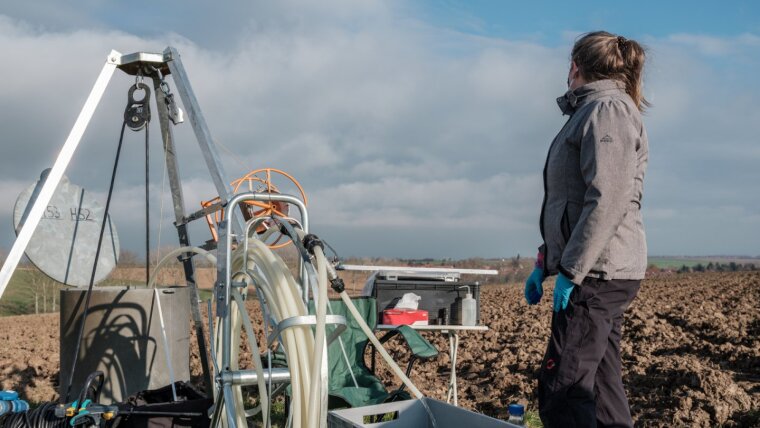
The CRC AquaDiva has established two Critical Zone Exploratories (CZE):
- The Hainich Critical Zone Exploratory (Hainich CZE),
- The Saale-Elster-Sandsteinplatte Observatory (SESO).
The Hainich CZE is part of the Critical Zone Exploration Network (www.czen.org/content/hainich-czoExternal link).
With our Critical Zone Exploratories, we focus on integrated research on the functioning and biodiversity of the subsoil compartments of the Earth´s Critical Zone and their links and connections to the pedosphere, the biosphere, and the lower atmosphere.
The Hainich Critical Zone Exploratory (Hainich CZE)
The Hainich CZE, located in the northwestern part of the Federal State of Thuringia in central Germany, was established since 2010 in an alkaline geological setting and encompasses two main aquifer assemblages along a ~6 km hillslope transect in alternating limestone–mudstone rock, spanning forest, pasture and agricultural land-uses. Five locations have been established along the transect (H1 through H5) and up to four groundwater wells have been built at each location. The well and monitoring plot transect follows the eastern slope of the Hainich low-mountain range.
The CRC projects, applying new tools from the fields of biology, chemistry, geoscience, and informatics, characterized distinct surface and groundwater properties and identified six distinct groundwater zones. Thus, CRC focues on investigating how these zones developed and are sustained, applying isotopic tools, and developing models to better link the cycling of carbon and nitrogen to microbial community and environment. With the third funding period, the CRC AquaDiva plans to synthesize the vast amount of information from the Hainich CZE to (i) indicate how signals are transported and transformed as they transit the unsaturated zone ('aeration zone') into aquifers and (ii) investigate how temporal variations in surface inputs alter the subsurface and how this feeds back to influence surface conditions.
More details about aquifer configuration and geostructural links at the Hainich CZE:
Kohlhepp et al., 2017External link
The Saale-Elster-Sandsteinplatte Observatory (SESO)
The Saale-Elster-Sandsteinplatte Observatory (SESO) site, located in the southeastern part of the Federal State of Thuringia in central Germany, was established during the second CRC AquaDiva funding period, the first two groundwater wells were constructed in winter 2018/2019. The SESO site is established in acidic sandstone rock, with surface land cover similar to the Hainich CZE, thus representing a contrasting geological site. Initial observations were carried out during the second funding period and, with the third funding period, the CRC AquaDiva proposes to expand observations at SESO.